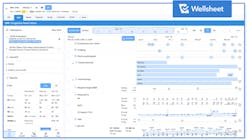To address physician burnout and dissatisfaction with the EHR, New Jersey-based RWJBarnabas Health (RWJBH) is working with a startup called Wellsheet that pulls data from the EHR, prioritizes clinical content through machine learning algorithms, and optimizes the provider workflow.
Stephen O’Mahony, M.D., vice president and chief health information officer at RWJBH, the largest integrated healthcare delivery system in New Jersey, recently described his work with Wellsheet. First, he described the nature and scope of the problem. “Clinician wellness is a priority for us. Clinicians are crucial to our organization and there has been growing literature about burnout and when you look at causes of dissatisfaction, the top reason is the burden of the electronic health record,” he said. “The EHR is crucial to quality and safety, but we haven’t done enough yet to give back to the clinicians, so when I was introduced to Wellsheet, I could see they had the ability to change the game.” (RWJBH is an investor in Newark Venture Partners Fund, LP, an early stage venture fund based in Newark, N.J., which has invested in Wellsheet.)
Wellsheet’s predictive clinical workflow platform uses the FHIR API standards to work within an existing EHR to surface the most relevant content for physicians in a view that is contextualized and prioritized for their needs. “When I am in Cerner, I might look at a dozen screens to get all the information I need to make decision, and I am trained to know where to look, but it takes time,” O’Mahony explained. “Wellsheet knows I am a hospitalist or surgeon and knows the patient’s problems or diagnoses, and it surfaces the information I would have to search for. For instance, it shows me in a graph the labs relevant to a congestive heart failure admission. It is using AI to know what I am likely to need to put it in the front instead of me searching around for it.”
For instance, Wellsheet brings risk tools to the forefront. If the patient has Afib, Wellsheet brings the appropriate calculator in the EHR right to the forefront. “It is bringing the good things the EHR has to me so I can use them quicker,” O’Mahony said.
“We have designed the user experience to be easily customizable by the end user,” said Craig Limoli, CEO and founder of Wellsheet. “For a cardiologist treating a patient with chronic heart failure, they are going to want to see a particular set of labs, vitals, and studies displayed to them to help make a treatment decision. Wellsheet will predict what that content will be in the most optimized format we believe that physician will want to see. But then we allow the end user to rearrange that content and add new pieces of data and make the view their own, which is something by and large that EHR systems cannot do. We measure every interaction the physician has so we can get better at predicting what that default presentation should be.”
Since implementing the system at their first two pilot sites, RWJBH has reduced the average time physicians spend in the EHR chart by 44 percent. It has also increased patient throughput by 20 percent. “That is the a-ha moment,” O’Mahony said. “This is not just theoretical. And clinicians are not just happier with the experience. We have independently measured it and seen a 44 percent reduction in time in the EHR. That is what is heartening to me.”
The use of FHIR APIs in the EHRs to pull data is crucial to RWJBH because it is about to begin a major EHR transition. It currently has seven hospitals on Cerner and four on Allscripts, and all 11 will begin transitioning to Epic in 2021. The modern interoperability requirements on EHRs are hugely important, O’Mahony said. “Every time we have done something like this in the past, it worked and the next upgrade kicked it out and it broke. We have a large and growing health system. I did not want to do all this work and not be able to use it. But I know it will work with other EHRs. Other providers are using Wellsheet in Epic. Our foundation is that FHIR API standard.”
O’Mahony said all the regulatory work on interoperability standards is paying off here because disruptive startup companies such as Wellsheet can successfully integrate into the EHR. “This is opening up a world. We can use a complementary solution to help move the EHR forward. We are not getting rid of EHR vendors but helping them move forward.”


